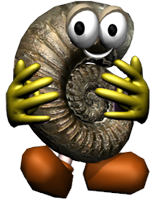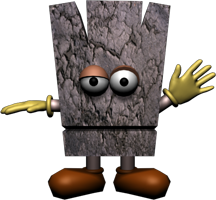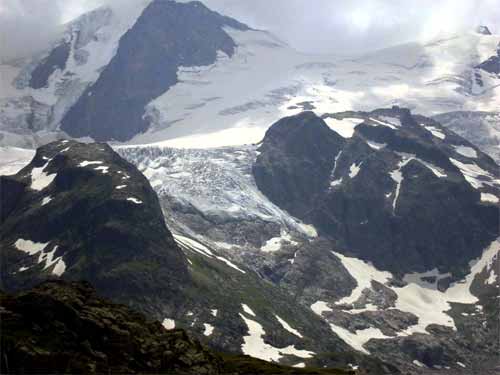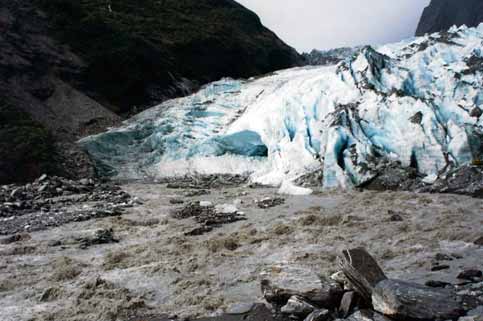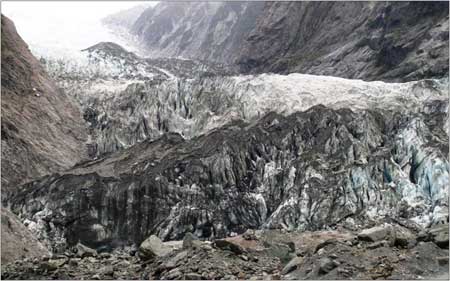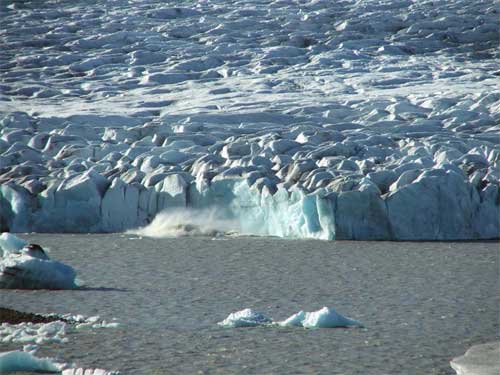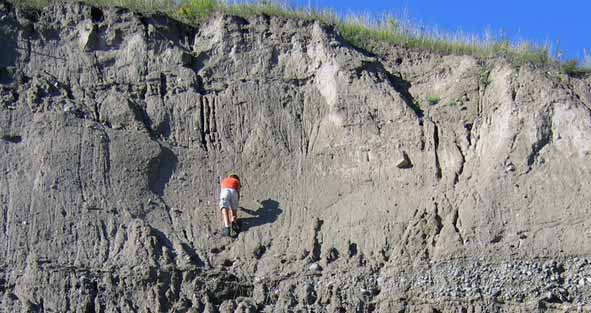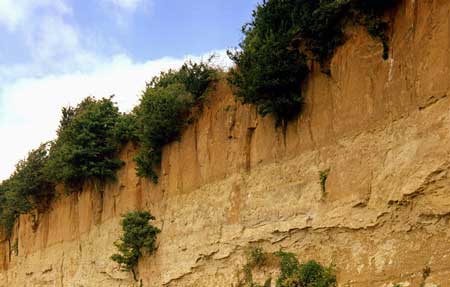Glaciers
A glacier begins when snow doesn't completely melt away during the summer. Each winter new snow falls on top of the old snow. Thick layers of snow are gradually compressed into glacial ice.
A glacier might look like a solid block of ice, but it is actually moving very slowly. The glacier moves because pressure from the weight of the overlying ice causes it to deform and flow. Meltwater at the bottom of the glacier helps it to glide over the landscape.
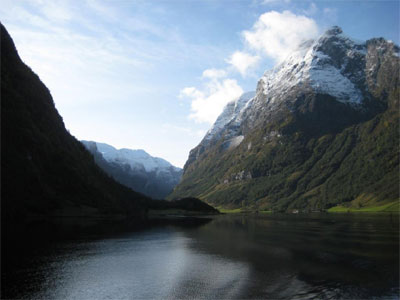
There are different types of glaciers:
![]() Alpine glaciers, which begin high up in the mountains in bowl-shaped hollows called cirques.
Alpine glaciers, which begin high up in the mountains in bowl-shaped hollows called cirques.
![]() Continental glaciers, which are continuous masses of ice that are much larger than alpine glaciers.
Continental glaciers, which are continuous masses of ice that are much larger than alpine glaciers.
There are alpine glaciers high up in the mountains all over the world. Some mountain ranges have enough ice to form extensive ice fields. There are ice caps in Iceland and huge ice sheets in Greenland and Antarctica.
Glaciers are made up of more than just ice and snow. They contain water, rocks and sediments. This can make the ice look very dirty.
Ice shelves form when glaciers reach the sea and begin to float. The Ross Ice Shelf in Antarctica is a famous ice shelf.
Chunks of ice can break off an ice shelf or a glacier that reaches the sea. This is called calving. The ice chucks form icebergs up to 250 km long and 100 km wide. Very small icebergs are called bergy bits.
When a glacier melts, all of the rock, sand and mud that it was carrying gets left behind. Geologists call this mixture of sediment till.
Piles and ridges of sediment deposited at the edges and front of glaciers are called moraines.
« Back 




